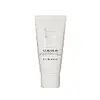What's inside
What's inside
 Key Ingredients
Key Ingredients

 Benefits
Benefits

 Concerns
Concerns

 Ingredients Side-by-side
Ingredients Side-by-side

Water
Skin ConditioningGlycerin
HumectantPotassium Cocoyl Glycinate
Citric Acid
BufferingGlyceryl Stearate Se
EmulsifyingPentylene Glycol
Skin ConditioningAcrylates Copolymer
Tangeritin
AntioxidantChondrus Crispus
MaskingSaccharum Officinarum Extract
MoisturisingXylitol
HumectantDisodium Lauryl Sulfosuccinate
CleansingButylene Glycol
HumectantAnhydroxylitol
Humectant1,2-Hexanediol
Skin ConditioningDextran
Arginine
MaskingSodium Lauroamphoacetate
CleansingSodium Chloride
MaskingHydroxyacetophenone
AntioxidantWater, Glycerin, Potassium Cocoyl Glycinate, Citric Acid, Glyceryl Stearate Se, Pentylene Glycol, Acrylates Copolymer, Tangeritin, Chondrus Crispus, Saccharum Officinarum Extract, Xylitol, Disodium Lauryl Sulfosuccinate, Butylene Glycol, Anhydroxylitol, 1,2-Hexanediol, Dextran, Arginine, Sodium Lauroamphoacetate, Sodium Chloride, Hydroxyacetophenone
Glycerin
HumectantPotassium Cocoyl Glycinate
Water
Skin ConditioningButylene Glycol
HumectantPolyglyceryl-10 Myristate
Skin ConditioningGlyceryl Stearate Se
EmulsifyingGlycol Distearate
EmollientCitric Acid
BufferingParfum
MaskingPropanediol
SolventPhenoxyethanol
PreservativeLimonene
PerfumingHydroxypropyl Methylcellulose
Emulsion StabilisingLinalool
PerfumingCitronellol
PerfumingAgastache Mexicana Flower/Leaf/Stem Extract
Skin ConditioningPhosphatidylglycerol
Lecithin
EmollientBHT
AntioxidantGlycerin, Potassium Cocoyl Glycinate, Water, Butylene Glycol, Polyglyceryl-10 Myristate, Glyceryl Stearate Se, Glycol Distearate, Citric Acid, Parfum, Propanediol, Phenoxyethanol, Limonene, Hydroxypropyl Methylcellulose, Linalool, Citronellol, Agastache Mexicana Flower/Leaf/Stem Extract, Phosphatidylglycerol, Lecithin, BHT
 Reviews
Reviews

Ingredients Explained
These ingredients are found in both products.
Ingredients higher up in an ingredient list are typically present in a larger amount.
Butylene Glycol (or BG) is used within cosmetic products for a few different reasons:
Overall, Butylene Glycol is a safe and well-rounded ingredient that works well with other ingredients.
Though this ingredient works well with most skin types, some people with sensitive skin may experience a reaction such as allergic rashes, closed comedones, or itchiness.
Learn more about Butylene GlycolCitric Acid is an alpha hydroxy acid (AHA) naturally found in citrus fruits like oranges, lemons, and limes.
Like other AHAs, citric acid can exfoliate skin by breaking down the bonds that hold dead skin cells together. This helps reveal smoother and brighter skin underneath.
However, this exfoliating effect only happens at high concentrations (20%) which can be hard to find in cosmetic products.
Due to this, citric acid is usually included in small amounts as a pH adjuster. This helps keep products slightly more acidic and compatible with skin's natural pH.
In skincare formulas, citric acid can:
While it can provide some skin benefits, research shows lactic acid and glycolic acid are generally more effective and less irritating exfoliants.
Most citric acid used in skincare today is made by fermenting sugars (usually from molasses). This synthetic version is identical to the natural citrus form but easier to stabilize and use in formulations.
Read more about some other popular AHA's here:
Learn more about Citric AcidGlycerin is already naturally found in your skin. It helps moisturize and protect your skin.
A study from 2016 found glycerin to be more effective as a humectant than AHAs and hyaluronic acid.
As a humectant, it helps the skin stay hydrated by pulling moisture to your skin. The low molecular weight of glycerin allows it to pull moisture into the deeper layers of your skin.
Hydrated skin improves your skin barrier; Your skin barrier helps protect against irritants and bacteria.
Glycerin has also been found to have antimicrobial and antiviral properties. Due to these properties, glycerin is often used in wound and burn treatments.
In cosmetics, glycerin is usually derived from plants such as soybean or palm. However, it can also be sourced from animals, such as tallow or animal fat.
This ingredient is organic, colorless, odorless, and non-toxic.
Glycerin is the name for this ingredient in American English. British English uses Glycerol/Glycerine.
Learn more about GlycerinGlyceryl Stearate Se is a self-emulsifying (SE) form of glyceryl stearate. Self-emusifying means this ingredient automatically blends with water. It is an emulsifier, emollient, and cleansing agent.
As an emulsifier, Glyceryl Stearate Se prevents ingredients such as oil and water from separating. It is also a surfactant, meaning it helps cleanse the skin. Surfactants help gather oil, dirt, and other pollutants so they may be rinsed away easily.
Emollients help your skin stay smooth and soft. It does so by creating a film on top of the skin that helps trap moisture in.
Learn more about Glyceryl Stearate SePotassium Cocoyl Glycinate is an amino acid-based surfactant and cleaning agent. This ingredient can be derived from animals or plants. It may also be synthetically created from fatty acids of the coconut and glycine.
Potassium Cocoyl Glycinate is a gentle surfactant. Surfactants help gather the dirt, oil, and other pollutants from your skin to be rinsed away. It is a mild cleanser and naturally produces foam.
Water. It's the most common cosmetic ingredient of all. You'll usually see it at the top of ingredient lists, meaning that it makes up the largest part of the product.
So why is it so popular? Water most often acts as a solvent - this means that it helps dissolve other ingredients into the formulation.
You'll also recognize water as that liquid we all need to stay alive. If you see this, drink a glass of water. Stay hydrated!
Learn more about Water